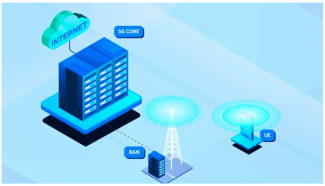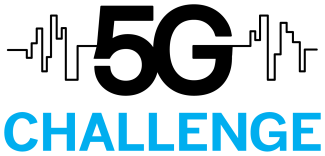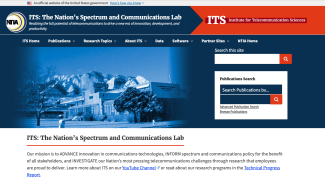Today, mobile wireless networks are assembled by mobile network operators and composed of many proprietary solutions. Each discrete element typically has custom, closed-source software and hardware. Changes to any single element require complex and meticulous verification of the entire network. This industry dynamic increases costs, slows innovation, and reduces competition. Security issues are often difficult to detect and fix.
In response, the National Telecommunications and Information Administration’s Institute for Telecommunication Sciences (NTIA/ITS), in collaboration with the Department of Defense Office of the Under Secretary of Defense for Research and Engineering (OUSD(R&E)) is carrying out the 5G Challenge to accelerate the adoption of: open interfaces, interoperable subsystems, and modular, multi-vendor solutions.
In the envisioned future 5G market, open interfaces reflect clear-cut requirements, enabling true plug-and-play operation. Modular 5G elements let network operators quickly and easily reconfigure, update, or replace subsystems as needed. External scrutiny of open interfaces allows vulnerabilities to be identified and patched. Attracted by this open, modular, interoperable environment, new suppliers can more easily emerge. A diversified marketplace delivers targeted innovation and drives down costs. International allies and partners can establish secure, trusted supply chains. Beneficiaries of this future 5G market include DoD, international allies and partners, network operators, businesses, and consumers.
This public prize challenge approach will support the growth of a large, vibrant community working on 5G multi-vendor interoperability. This approach is a powerful catalyst for creating diverse solutions, attracting non-traditional performers, and sparking new innovations. The 5G Challenge envisions a world where flexible 5G technologies create new supplier opportunities and enhance network security. Streamlining integration enables continuous development, integration, and testing.

NTIA/ITS created this series of explainer videos to inform the public about specific 5G technologies relevant to the 5G Challenge:

On January 11, 2021, the National Telecommunications and Information Administration (NTIA) issued a 5G Challenge Notice of Inquiry (NOI) on behalf of the Department of Defense (DoD). On February 16, 2021, NTIA received 51 responses, totaling 384 pages. The NOI requested information on how to use Prize Challenges to accelerate the development of the open 5G ecosystem and support DoD missions. The NOI questions were intentionally broad to elicit wide-scale response and to ensure technical neutrality.
This document provides an analysis of the NOI responses. This analysis was created by NTIA/ITS to inform future collaborations between the DoD and NTIA. This analysis was instrumental in informing the creation of the 5G Challenge, with the goal of accelerating the maturity of 5G open interfaces, promoting interoperability among vendor modules, and lowering barriers of entry into the 5G marketplace.

The Institute for Telecommunication Sciences (ITS), the Nation’s Spectrum and Communications Lab, supports the Department of Defense through a combination of its subject matter experts in 5G and its Boulder research, development, test, and evaluation (RDT&E) laboratory infrastructure, including the Communications Research and Innovation Network (CRAIN) lab on the U.S. Department of Commerce Boulder Laboratories campus and the Advanced Communications Test Site (ACTS) at the Table Mountain Radio Quiet Zone located north of Boulder, Colorado.

The Under Secretary of Defense for Research and Engineering (USD(R&E)) serves as the primary advisor to Department of Defense (DOD) leadership on all matters pertaining to the Department’s Research and Engineering (R&E) enterprise, technology development and transition, developmental prototyping, experimentation, and administration of testing ranges and activities. USD(R&E) has the lead responsibility within the Department for synchronizing Science & Technology (S&T) efforts across the DOD, the Joint Staff and the Services.
The USD(R&E) also serves as the Chief Technology Officer (CTO) of the Department and is tasked with the imperative mission of ensuring continuous advancement of technology and innovation within the DOD enterprise. As the CTO, the USD(R&E) advises the Secretary of Defense on all matters related to research; engineering; manufacturing; developmental test and evaluation; and technology development, innovation, and protection activities and programs in the DOD and occurring internationally. The USD(R&E) also establishes priorities across those matters to ensure conformance with Office of the Secretary of Defense’s policy and guidance.
Learn more about USD(R&E) FutureG & 5G efforts.
